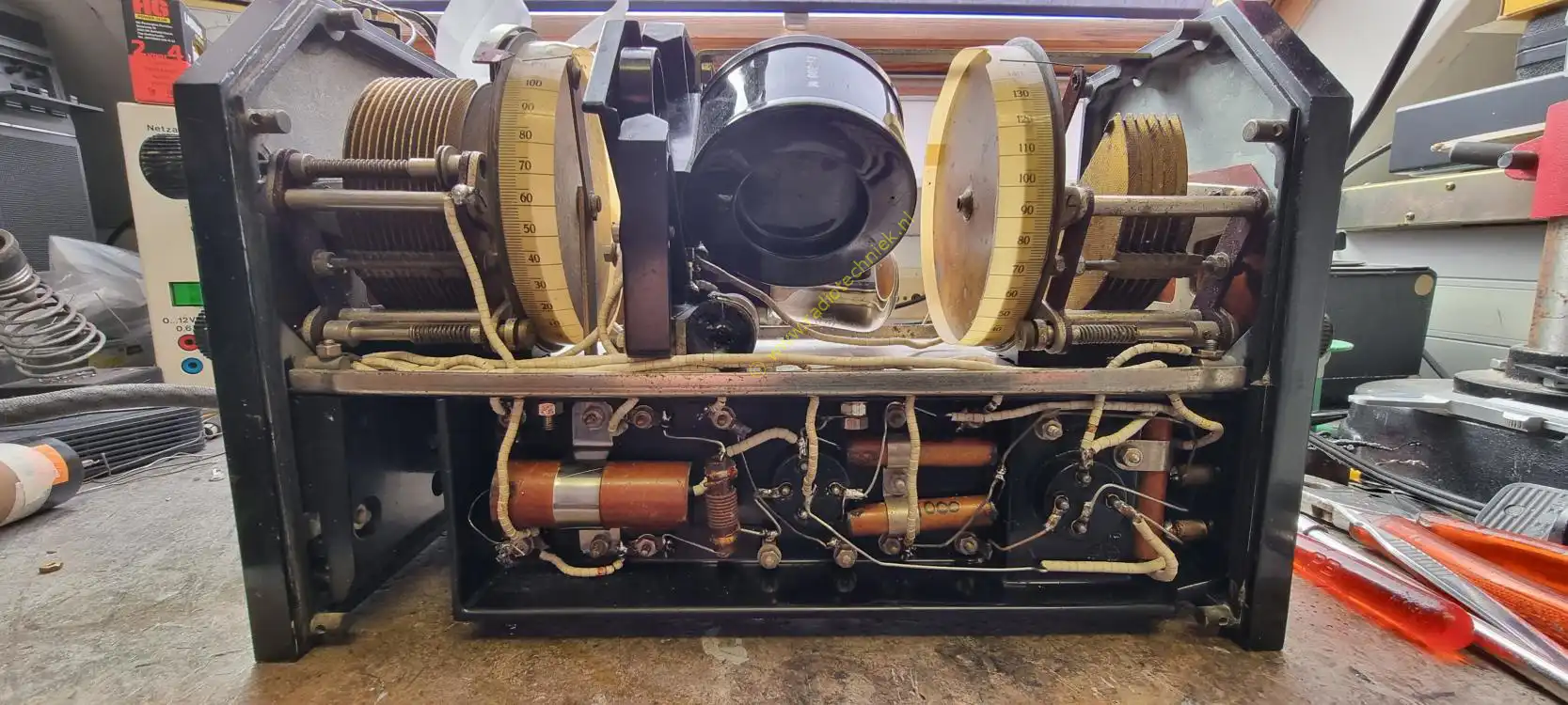
I bought this Philips 2802 as a scrapper. But everyone knows that a Philips 2802 is very rare. So a demolition Philips 2802 does not exist.

The unit came with a complete set of coils. Unfortunately no coil box. And the radio covers are missing. So we're going to restore. And that will be a nice surprise.

Unfortunately, the Bakelite chassis was broken and pieces were missing. and because I had never tried to restore that before, I tried something.

And this is the final result. To be honest it wasn't what I expected. But for the time being, the Philips 2802 could be restored.

This is the volume potentiometer here you see the problem of the broken beads. For now we are going to make sure that the beads are seated properly within this potentiometer unit. Later we will fill in the missing beads.

A close up of the potentiometer unit. At the top right there is a resistance from the screen grid to ground. And because the filament is on ground, you can still see the loose wire.

All parts are also checked for value. This capacitor is leaking and can no longer be used. But this capacitor can be restored. And then be used again.

The chassis plate has been cleaned and the construction of the radio can begin. Assembling the volume potentiometer unit is a terrible job.

This is the removable coil slot. The contacts are quite corroded. The capacitor needs to be replaced. The rest was OK.

Here is an experiment with a 1:3 transformer. The transformer is separate for the radio. And of course China is also represented.

These are the data of the transformer. They are suitable for replacing the Philips 1:3 transformer and they fit in the housing of the Philips transformer. I did have to bend the tabs of the transformer.

A Philips 2802 was supplied with the Philip 3003. The Philips 3003 is the power supply for this radio. A 4-volt battery was needed for the filament current.

Because the choke from the power supply of the 2802 was also missing, there is a loose choke next to it.

One of the plug-in coils appeared to have an interruption. When opened, the solder connections in the connector appeared to be loose.

Sometimes when you visit a radio fair you are lucky enough to find that part that you never expected to find.

This piece of Bakelite was missing the two strips at the end and 4 holes had been drilled in it for a tube.

And because we learned something, I collected the sawdust from sawing the Bakelite strips. The holes and imperfections are closed with a special type of glue and this bakelite powder.

Because the Bakelite chassis turned out so well, the following experiment came to mind. An earlier break in the side panel had a hairline crack. This also filled with bakelite powder gives the following result.

The blocks of wood are for strength and a screw goes through them to clamp it in the wrapping machine.

And the rest is simply the core of an old Philips transformer through it. In the house on the Bakelite chassis.





















































